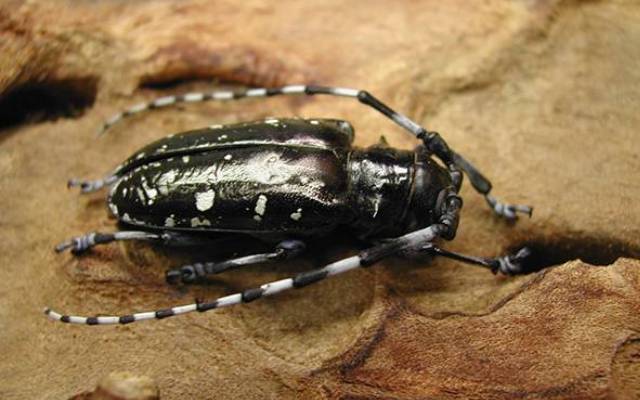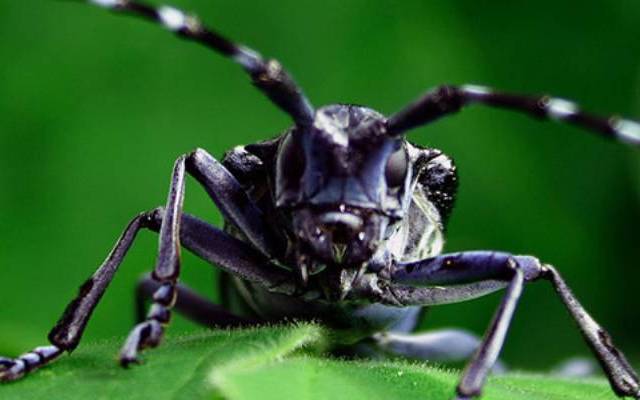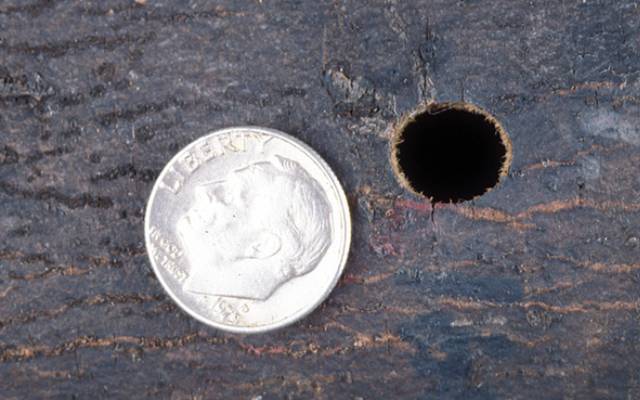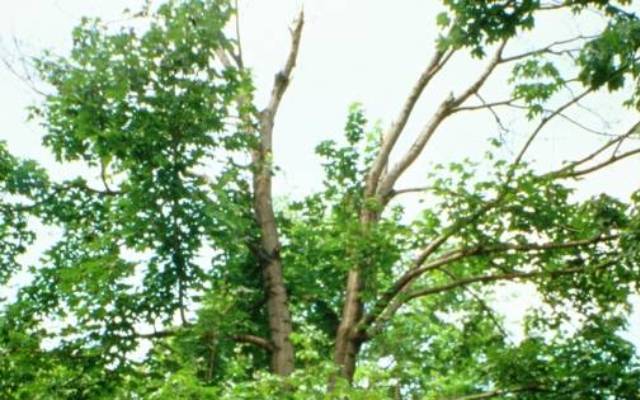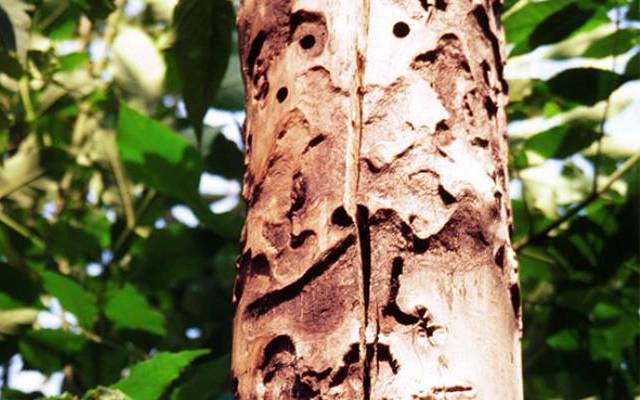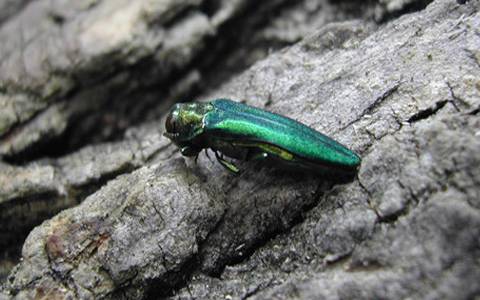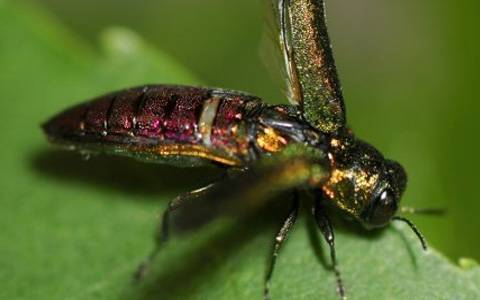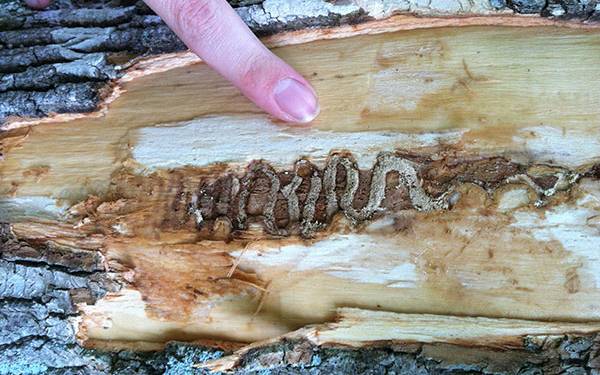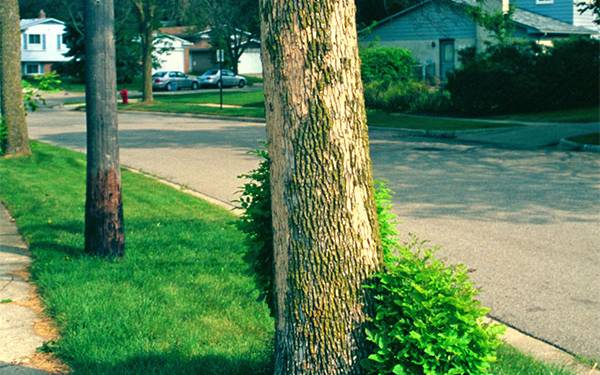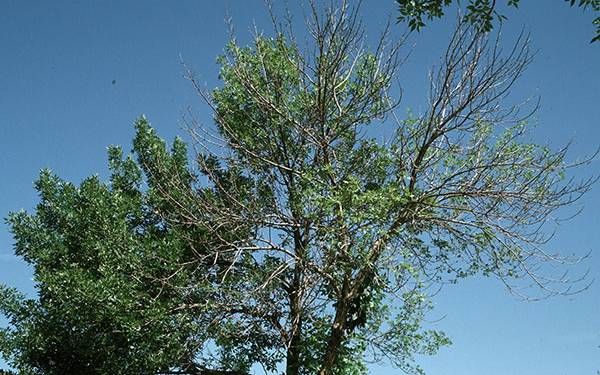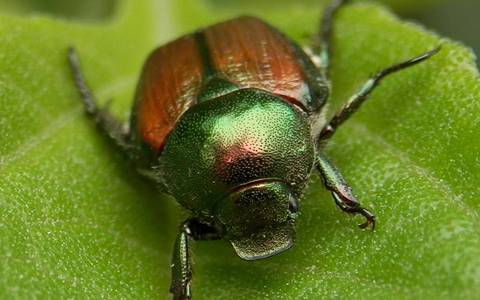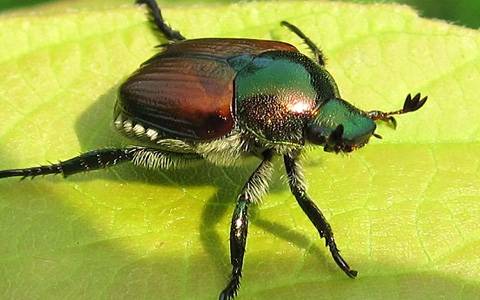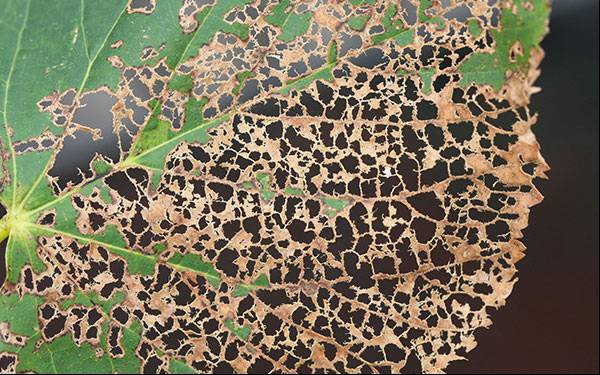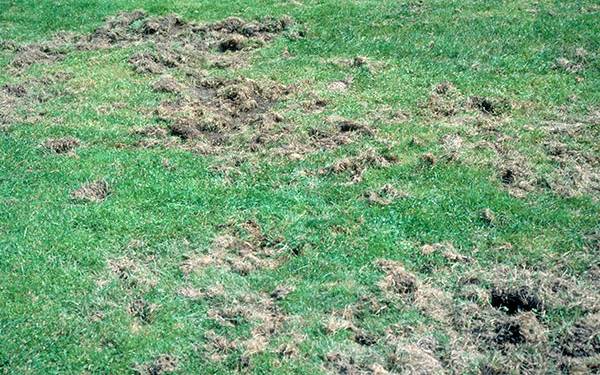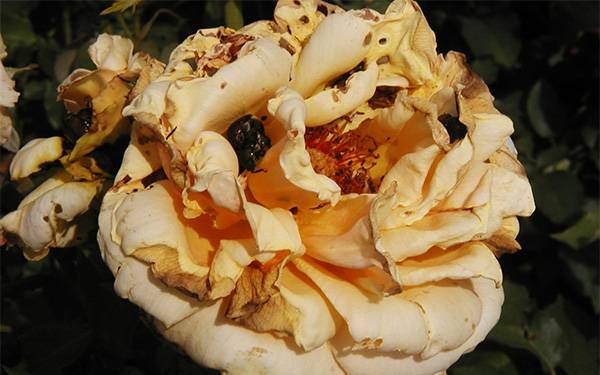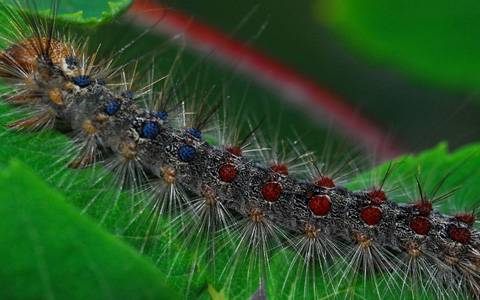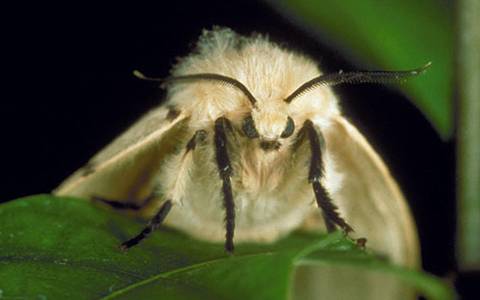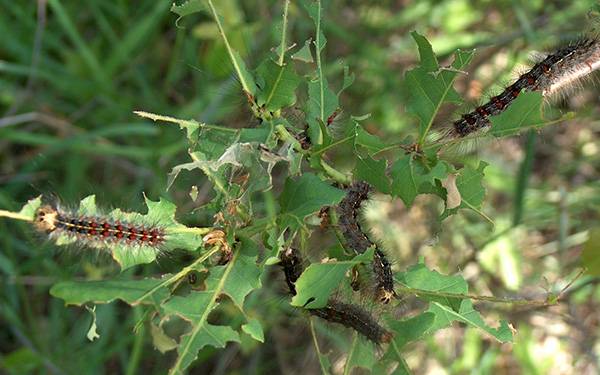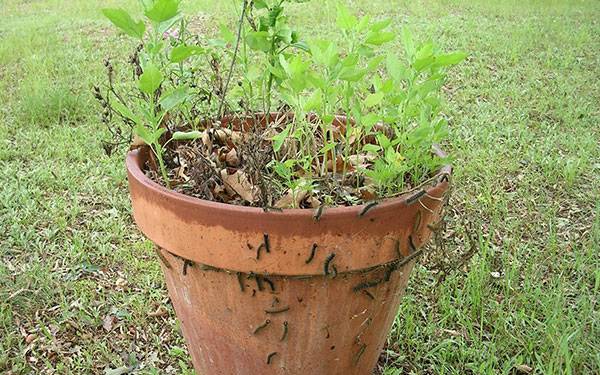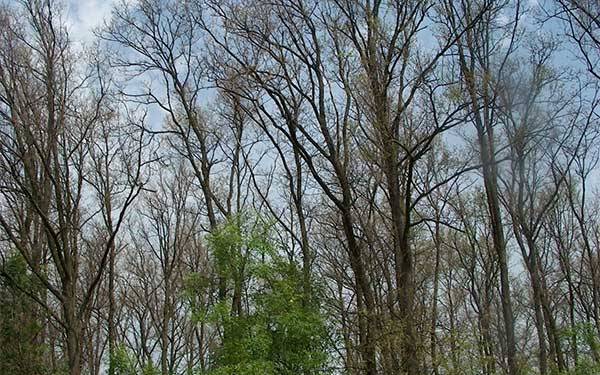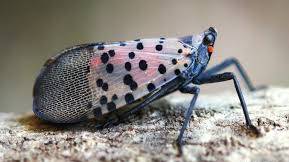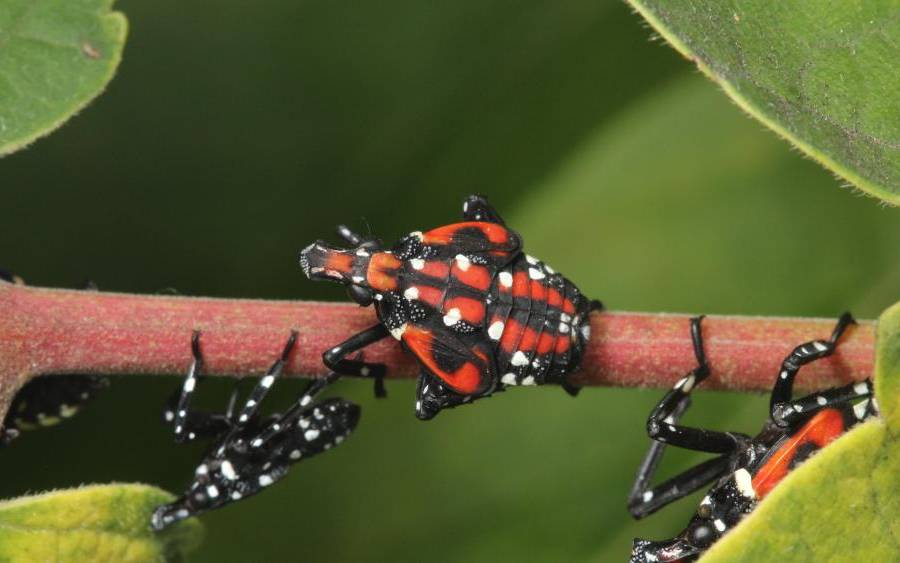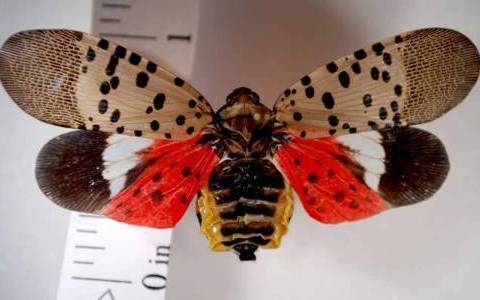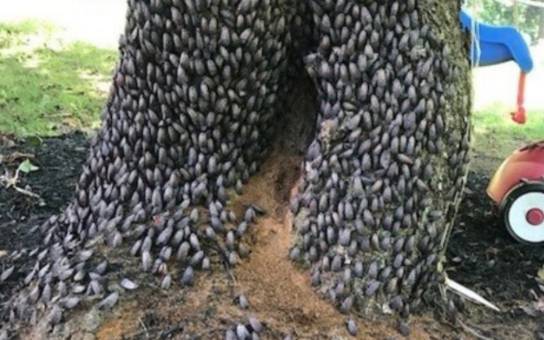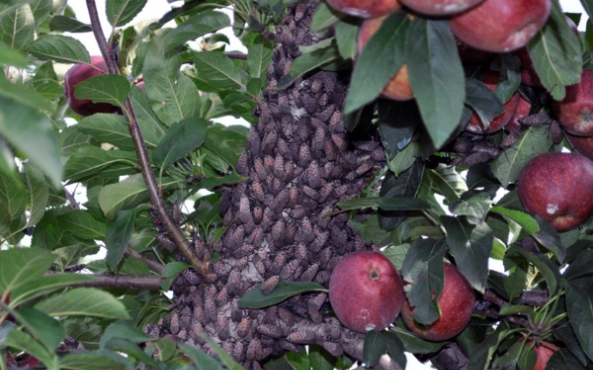Invasive Pests
Top 5 Invasives to Watch for
This page lists non-native pests in alphabetical order that have are not currently in Utah, but threaten to harm the state's economy and/or environment. These are pests that are important to be aware of and should be reported as invasive species. See Report an Invasive Pest for more details.
Asian Longhorned Beetle
Invasion
Asian longhorned beetle (ALB) is an invasive wood-boring pest that threatens over 100 hardwood tree species and maple syrup production. ALB is currently known to occur in Massachusetts, New York, South Carolina, and Ohio, and is considered eradicated from New Jersey and Illinois. The western U.S. is thought to be less susceptible to ALB establishment due to a lack of suitable host plants outside urban areas.
Description
Adults are large beetles roughly 1 inch in length (excluding the antennae) with a glossy black body with irregular white (rarely yellowish) spots. Some adults may have a bluish tinge to their feet and antennae. Larvae can reach up to 2 inches in length.
Damage
Both adults and larvae feed on host trees, although the larvae cause the most damage. ALB bores into host trees to feed, and severe larval infestations can result in dead branches and weakened limbs that leave the tree more vulnerable to breakage during storms.
Learn More
Emerald Ash Borer
Invasion
Emerald ash borer (EAB) is an invasive woodboring beetle that has caused the decline and mortality of tens of millions of ash trees (Fraxinus spp.) in the U.S. It is considered the most destructive forest pest to ever invade North America. It is native to Asia and parts of Russia and now occurs in 36 eastern and midwestern states and its range is rapidly expanding. It has not been reported in Utah, but two infestations in nearby Colorado have recently been reported.
Description
Adults are metallic-green beetles about 1/2 inch long with bronze heads, short antennae, and iridescent purple-red abdominal segments beneath their wings. Larvae are cream-colored with 10 body segments and can reach a length of 1 inch when mature.
Damage
EAB attacks all North American ash (Fraxinus) species irregardless of size and health condition. In Utah, two native ash species are susceptible to EAB: singleleaf ash (Fraxinus anomala) and velvet ash (Fraxinus velutina). Additionally, the substantial numbers of planted ash in Utah's urban canopies are also susceptible to EAB attack. Larvae are the primary damaging life stage and are responsible for killing trees. Infestations are difficult to detect, especially during the early stages of invasion. Infestations are difficult to detect, especially during the early stages of invasion
Learn More
Japanese Beetle
Invasion
Japanese beetle (JB) is an invasive insect from Japan that has an extensive plant host range. Since the 1970s, JB has been found throughout many western states including Utah (2006), when an eradication program successfully eliminated JB from the state. In 2019, 36 beetles were captured in Salt Lake County and seven in Davis County – the highest in more than a decade. UDAF declared an emergency in 2020 and completed its fourth year of eradication efforts in 2023. Based on trapping data, population continue to fall in affected counties.
Description
Adults are about 1/2 inch long and have a metallic green head and mid-section with copper-brown wing covers and white hair tufts along the sides of the abdomen. Larvae are creamy white grubs with a grayish-brown hind end and range in size from 1/8 inch when hatching to 1 inch at maturity.
Damage
Adult JB feed on the foliage of over 300 species of ornamental and crop plants, while the larvae primarily feed on the roots of turf grasses and, to a lesser extent, roots of young ornamental trees and shrubs, and some garden crops. Damage to grasses becomes apparent during late summer and early fall.
Learn More
Spongy Moth
Invasion
Spongy moth is the new name for European gypsy moth, whose name was changed in 2022 due to cultural sensitivity. These flightless defoliating pests threaten U.S. forests as well as trees and shrubs in all landscapes. Spongy moths are native to Europe and are established in the eastern U.S. and occur other parts of the country. Spongy moths have previously been found and successfully eradicated in Utah. However, recent introductions of a flighted Asian subspecies, Lymantria dispar asiatica have occured from foreign cargo ships (including in Oregon and Washington), but to date, eradication efforts have been successful. Lymantria dispar asiatica is not established in the U.S. and has not been detected in Utah.
Description
Adult males are grayish-brown moths with a ~1 1/2 inch wingspan; adult females are about an inch larger, with black wavy markings on creamy white wings. Both sexes have an inverted V-shape that points to a dot on the wings. Older larvae are distinguishable with long, tan bristles, five pairs of blue spots followed by six pairs of red spots lining the back, and yellow spots along the sides of the body. Mature larvae can reach 2 1/2 inches in length.
Damage
Larvae feed on the foliage of hundreds of tree species, preferring oak, aspen, apple, birch, and poplar, but they will also infest many other species as well as several western conifers. Some research suggests that spongy moths may be able to adapt to unsuitable host plants. Extensive feeding leaves trees weakened, more susceptible to drought, diseases and other pests, and can eventually kill trees and entire forests. The presence of spongy moths can lower property values in infested areas.
Learn More
Spotted Lanternfly
Invasion
The spotted lanternfly (SLF) is a large sap-feeding planthopper from China and is a new North American invasive species, first detected in the U.S. in Pennsylvania in 2014. As of fall 2023, established populations have been reported in 14 states including: Connecticut, Delaware, Indiana, Maryland, Massachusetts, Michigan, New Jersey, New York, North Carolina, Ohio, Pennsylvania, Rhode Island, Virginia, and West Virginia. SLF can damage hardwood and ornamental trees as well as fruit trees and grape, and is considered a nuisance pest.
Description
Adults are are about 1 inch long and have a piercing-sucking mouthpart. The forewing is gray with black spots, and the wing tips have closely spaced reticulated black blocks. The hind wings, which are visible during flight, have striking red, black, and white patches, and the abdomen is yellow with broad black bands. Eggs masses are about 1 inch long and covered by a wax that appears mud-like as it dries. Nymphs are also striking in appearance: the first 3 instars are black with white spots; the 4th instar develops red patches in addition to the white and black coloration.
Damage
SLF are broad generalists that suck sap from more than 103 plant species, and damage is inflicted by both adult and immature life stages. Hosts include grape, fruit trees, and hardwood/ornamental trees, and egg masses have been found on 172 species to date. Adults show a strong host preference for tree-of-heaven (Ailanthus altissima), an invasive plant from China that is widely established in the U.S. SLF is considered a nuisance pest as it can congregate in large numbers, and excrete large amounts of sticky honeydew that coats surfaces, attracts unwanted insects, and promotes mold growth.



